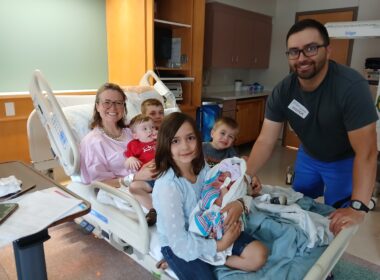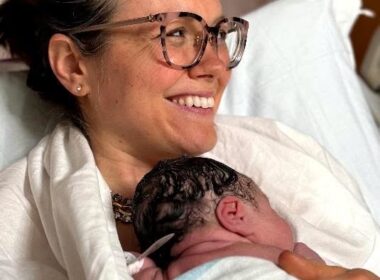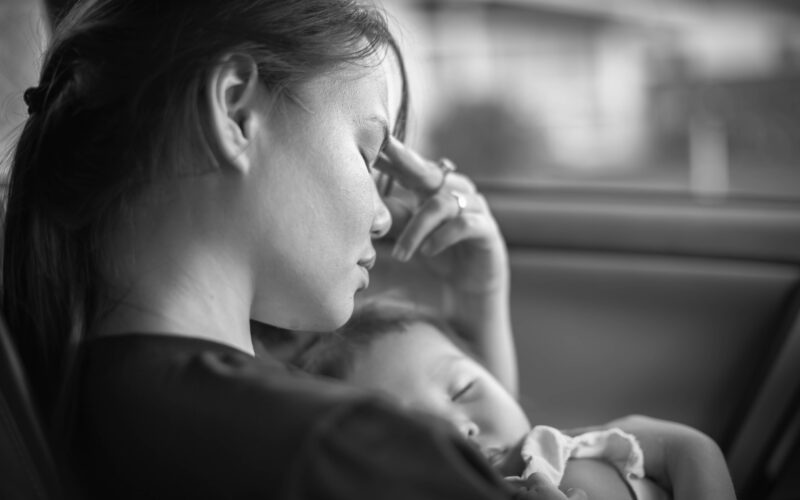By the time of her six-week postpartum visit, Laura knew that something was wrong. While many women experience baby blues syndrome postpartum, Laura began to wonder if her tearfulness, anger, and trouble connecting with her son meant that something more serious was going on. She suspected that she might have postpartum depression (PPD), and sought help from a doctor who could address the root cause of her PPD. Read on for the rest of Laura’s story…
I sat on the edge of the exam table as my obstetrician started to wrap up the appointment. My six-week-old son stirred in his carseat, beginning to fuss. But I had to ask the question.
“Could you tell me more about postpartum depression? I’m wondering if maybe I have it…” I managed to say before tears pooled in the corners of my eyes and betrayed my calm exterior.
Getting help for my postpartum depression
About 15 minutes later the doctor was sitting across from me, compassion in her eyes and the results of my postpartum depression (PPD) questionnaire in her hands.
“Your results are indicating you have moderate to severe postpartum depression,” she began gently.
I didn’t know what to feel in that moment. Doubt in the diagnosis? Shame that I succumbed to it? Relief that there was a name for what I was feeling? Mixed emotions swirled around as I tried to process the information she continued to share. She spoke about beginning an antidepressant. It might take several weeks to take effect and I would be on it for six months. No, she decided, we’ll extend it to a year so that you are not weaning off of it during the winter months. Then I asked the second question that would alter the course of my postpartum experience.
“Can I talk to my Napro doctor about trying progesterone instead?”
Because I had seen a Natural Procreative Technology (NaPro) doctor for my issues with infertility and miscarriage, I was aware that there was a protocol that used progesterone to treat PPD instead of antidepressants. Thankfully, my OB was open to collaborating with my NaPro doctor and I began the natural and alternative treatment of progesterone injections within a few days. Within 24 hours of my first dose, the fog of postpartum depression began to lift. Within a week, I felt like myself again. Within two weeks, my treatment was complete.
When it’s more than just baby blues syndrome
Postpartum depression affects approximately one in seven women after childbirth. It can occur early in the post-birth days but can also happen later, even up to a year after giving birth. The name is deceptive because symptoms can include not only sadness or depression but also anger, anxiety, restlessness, numbness, intrusive thoughts, and various physical symptoms. Postpartum depression is also different from baby blues syndrome, the name given to the emotional ups and downs that most women deal with after having a baby. Women with baby blues syndrome may feel moody and overwhelmed in the weeks after having a baby, but their feelings of sadness come and go, and generally get better as time goes on. Women with postpartum depression have much more severe feelings of sadness, hopelessness, and overwhelm, have trouble bonding with their babies, and their symptoms worsen over time.
Though the stereotype is a disheveled, tearful woman who can’t get out of bed, the reality of postpartum depression is that it manifests in many forms. I sat on my doctor’s exam table, showered and well-dressed with a smile on my face, but underneath was a numbness and fragility of emotion. I experienced episodes of sudden anger or irritability, times of anxiety and worry, easily-shed tears, and although I knew I loved my baby and wanted to take care of him, I just didn’t feel connected to him.
Treatment for PPD: Two different approaches
While baby blues syndrome does not require treatment, postpartum depression is a serious, potentially life-threatening condition that does require a doctor’s attention. The mainstream treatment for PPD generally includes prescribing antidepressants. While there are times when these medications are beneficial for patients, I was hesitant about the prescription for several reasons. It often takes several weeks for antidepressants to reach therapeutic levels and thus for the patient to feel any change. Antidepressants can cause a wide variety of undesirable side effects. And in my case, the doctor would have kept me on medication for a full year, a long duration of treatment.
In comparison, one theory regarding the cause of PPD is the drop of maternal hormones (especially progesterone) after labor and delivery. Therefore, supplementing with bioidentical progesterone to help replace that rapid loss has been found to improve and even cure PPD symptoms in many women. I already knew my progesterone was low during my non-pregnant cycles (when I experienced PMS) as well as during pregnancy (when I needed progesterone supplementation to prevent miscarriage), so it made sense to me that I could also be affected by low progesterone postpartum. I felt comfortable with the treatment regimen not only because I was familiar with the injections (having used them during pregnancy), but I also appreciated that the progesterone used by NaPro practitioners is bioidentical— the same chemical makeup as the progesterone my own body produces. Replacing a natural hormone in which my body was deficient was a treatment that got to the root of the issue. It was a treatment that worked with my body naturally, instead of overriding it with an antidepressant prescription. The duration of treatment would also be much shorter—less than two weeks—and there was no need to wean off medication.
Bioidentical progesterone treatment lifted the oppressive weight of my PPD
When I began bioidentical progesterone injections, I felt like I was coming up for air and could breathe freely again. I finally felt connected to my baby; the love I knew was there for him surfaced and bubbled over. I felt more energy and the ability to press forward in the postpartum period. Of course, progesterone didn’t magically take away the difficulties of that season, including a baby with reflux who didn’t sleep well. I still pursued other helpful tactics such as increasing outdoor walks and finding a mother’s helper. But progesterone lifted the oppressive weight of my postpartum depression, and the paralysis it caused, so that I could boldly walk through that time and meet each challenge with strength, hope, and courage.
Through my experience with PPD and my subsequent treatment with bioidentical progesterone, I gained a greater understanding of my body and mind postpartum. I found an effective natural treatment that continued to serve me in future pregnancies and postpartum as well as those of my friends. I became more empathetic about the mental health struggles of women postpartum, and bravely vocal in sharing my own.
“You’re a good mom,” my OB had kindly but firmly said during that original postpartum appointment. “Postpartum depression doesn’t change that.” PPD will tell you all sorts of lies about yourself and your motherhood. Progesterone silenced those. The truth is, my doctor was right and progesterone helped me to see it. PPD didn’t make me a bad mom. And overcoming it made me a better mom.
For more information on postpartum depression and treatment with bioidentical progesterone, check out these resources:
Understanding and Recognizing Postpartum Depression
The Use of Progesterone Supplements in Treating Postpartum Depression







